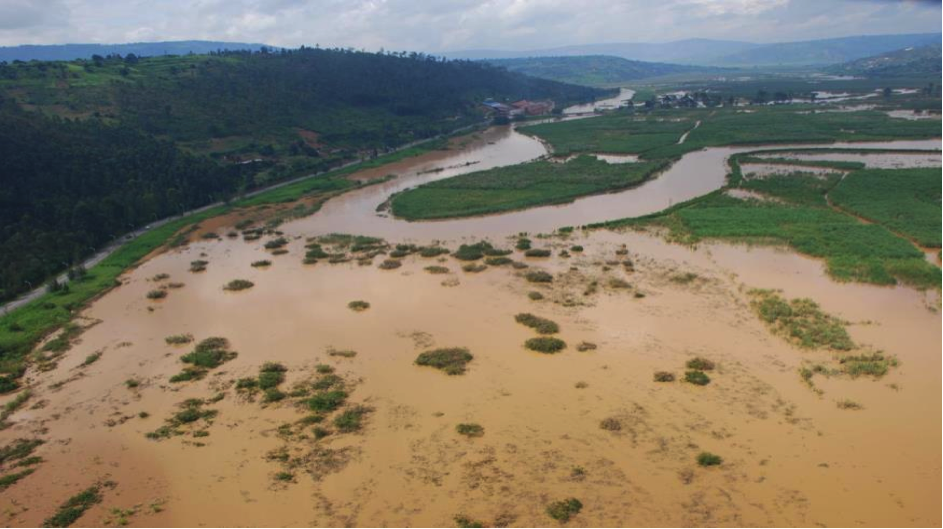Floods in Rwanda (Photo Credit: Denis Rugege/UNDP)
On 13 October, Rwanda will join the rest of the world to celebrate the International Day for Disaster Reduction, a day to celebrate how people and communities are reducing their risk to disasters and raising awareness about the importance of Disaster Risk Reduction (DRR).
Rwanda‘s disaster risk profile has significantly increased in recent years, resulting in more frequent and intense natural hazard-induced disasters, particularly floods and landslides. These disasters have caused loss of lives, the displacement of affected population, damage to infrastructures and crops as well as serious environmental degradation. There are growing concerns that disaster and climate change risks could erode Rwanda’s key development gains achieved over the past years.
In an effort to tackle these emerging challenges, the Government of Rwanda has made tremendous achievements to create a policy framework for Disaster Risk Reduction during the last few years such as the Disaster Management Policy, the Disaster Management Law, the National Platform for Disaster Risk Reduction. In addition, DRR has been firmly mainstreamed in the national 5-year development plan known as the Economic Development and Poverty Reduction Strategy 2013-2018 (EDPRS2).
But more remains to be done.
To support the Government of Rwanda to build resilience to mitigate disasters, UNDP is implementing a new programme related to Disaster Risk Reduction in close collaboration with the Ministry of Disaster Management and Refugee Affairs (MIDIMAR).
The “Building National and Local Capacities for Disaster Risk Management” programme aims to support the Government of Rwanda to strengthen its Disaster Risk Reduction and Management capacity, enhance preparedness and reduce risks as well as to achieve its commitments to the Hyogo Framework for Action (HFA).
The project is fully aligned with the Government’s development framework as laid down in the Vision 2020, the EDPRS II and the national disaster management framework as well as with the MIDIMAR’s Strategic Plan (2012-2017) and the United Nations Development Assistance Plan (UNDAP) (2013-2018).
“Investing one (1) US dollar in Disaster Risk Reduction saves seven (7) US dollar in response. UNDP will continue to support the Government of Rwanda to implement its National Disaster Management Policy and to honour its commitments under the Hyogo Framework for Action to protect the develop gains achieved under EDPRS-1” said Mr. Auke Lootsma, UNDP Rwanda Country Director.
The total budget of the project amounts to US$ 8,845,459 which is funded by UNDP, the European Union/World Bank and other partners.
The project is working towards achieving the following five outputs:
- Enhanced capacities of national and local institutions to manage disaster risks and recover from disaster events; including improved national and local coordination mechanisms;
- DRR mainstreamed into national/ district/ sectorial plans and policies; and capacities on DRRM Planning enhanced;
- A functioning national disaster risk assessment and monitoring system (DRAMS) established;
- End-to-end early warning systems established and operational; and
- Reduced community vulnerabilities and increased household resilience in selected high-risk districts and increased public awareness on DRR.

 Locations
Locations




